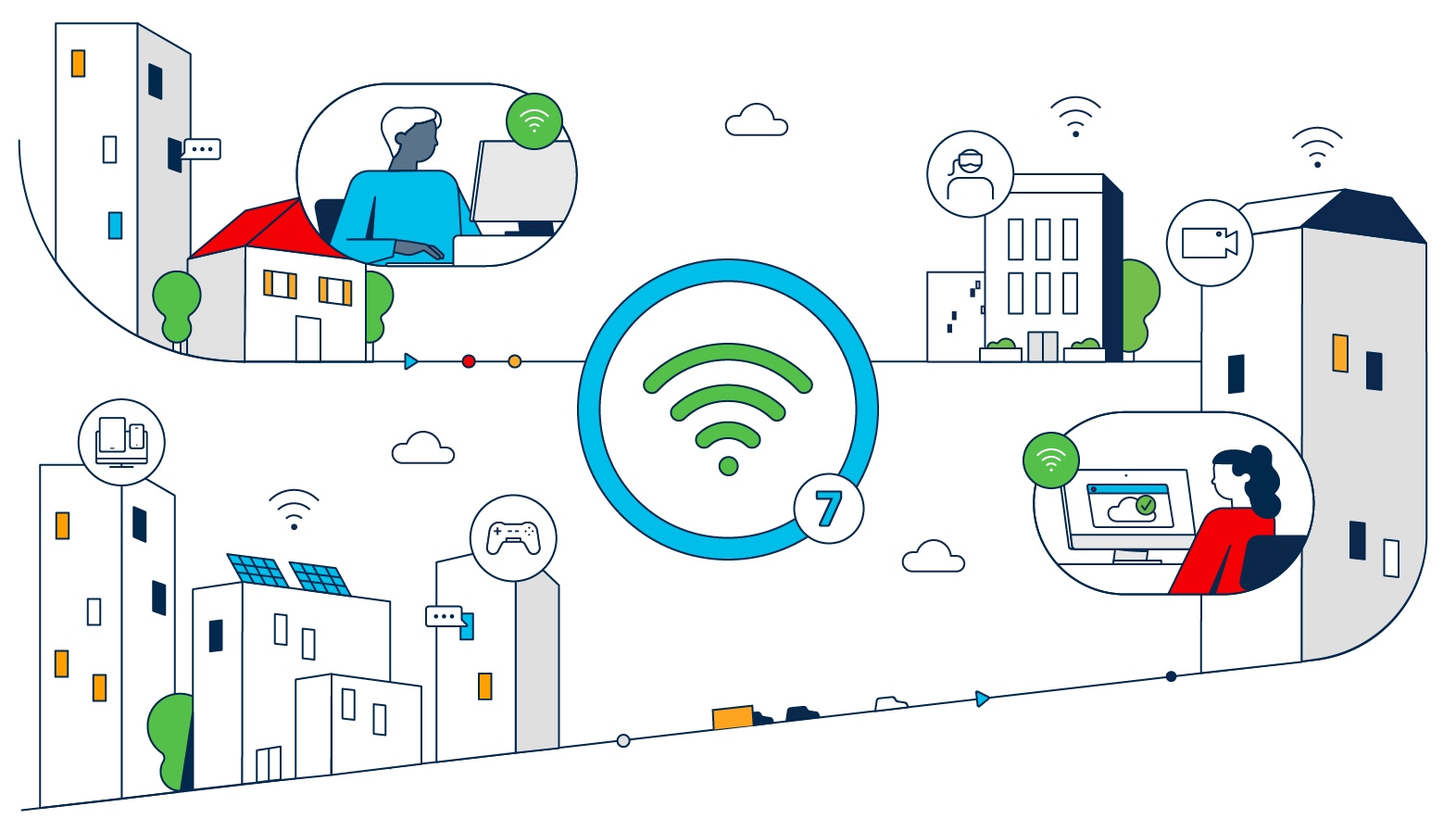What are the real-world applications of Wi-Fi 7?
Wi-Fi 7 is designed to meet the demands of a wide range of users and applications, particularly those requiring high speeds, low latency, and improved network efficiency. Here are some user groups and scenarios where Wi-Fi 7 could be particularly beneficial:
1. Tech-savvy consumers
Smart homes: With an increasing number of connected devices—such as smart appliances, security systems, and home automation tools—Wi-Fi 7 provides the necessary bandwidth and reliability.
Gamers: For gamers, especially those engaging in online multiplayer and cloud gaming, Wi-Fi 7's low latency and high speeds are critical for a seamless experience.
2. Enterprises and businesses
Large offices: Businesses with numerous employees and devices can benefit from Wi-Fi 7's ability to support high-density environments and reduce congestion.
Video conferencing: With the rise of remote work, businesses need reliable, high-quality video conferencing capabilities and Wi-Fi 7 can support them.
Data-intensive applications: Companies running applications that require high data throughput—such as big data analytics and real-time data processing—will find Wi-Fi 7 a great fit.
3. Public shared spaces
Airports and train stations: These environments often have a high density of users, and here Wi-Fi 7 offers better performance and more reliable connectivity than previous Wi-Fi versions.
Stadiums and arenas: Facilities hosting large events will benefit from Wi-Fi 7's capacity to support numerous simultaneous connections.
4. Educational institutions
Universities and schools: Educational environments with many students and faculty members can utilize Wi-Fi 7 to support online learning platforms, digital resources, and streaming services.
5. Healthcare facilities
Hospitals and clinics: The healthcare sector, which relies on reliable and secure connectivity for patient data management and telemedicine, can greatly benefit from the improved features of Wi-Fi 7, such as multi-link operation (MLO) for improved reliability and reduced latency and advanced interference management for stable performance in high-density, mission-critical environments.
6. Emerging technologies
Augmented and virtual reality (AR/VR): AR/VR applications that require high bandwidth and low latency can gain better performance using Wi-Fi 7.
Internet of Things (IoT): As the number of IoT devices continues to grow, Wi-Fi 7's efficiency and power-saving features can help manage these networks more effectively.
Conclusion
While Wi-Fi 7 might not be immediately necessary for every user, environments with high-performance needs or dense device usage will find Wi-Fi 7 advances particularly beneficial. As technology continues to evolve and the demand for faster, more reliable wireless connections increases, Wi-Fi 7 will play a crucial role in meeting these needs.
